TS
kolonel.bejo
(Tanya)AA-9 Amos or R-33
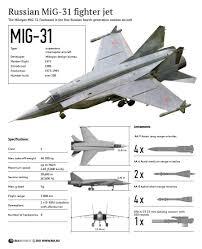
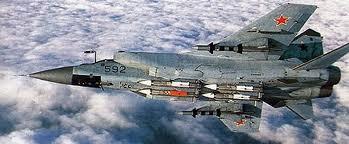
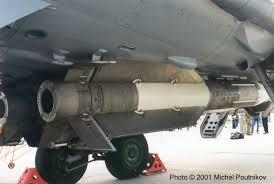
The R-33E long-range air-to-air guided missile is intended for all-aspect round-the-clock interception of air targets, including cruise missiles, against various background surfaces, in fair and adverse weather conditions, in spite of natural and enemy-organized interference. The R-33E missile is the basic weapon of the MiG-31E interceptor.
Missile control system as a part of the MiG-31E weapon system ensures autonomous guidance of missiles launched from one or several aircraft against one or several air targets that may fly at different altitudes and speeds.
The R-33E missile features inertial guidance at the initial leg and semi-active radar homing at the terminal leg. The missile is powered with a fixed-thrust solid-fuel engine. It is equipped with an active pulse-type proximity target sensor effective at the range of up to 20 m. Warhead is of HE fragmentation type.
Developer and manufacturer: State Machine-Building Design Bureau "Vympel"
Performance:
Launch range, km
120
Target engagement altitudes, km
0,05-25
Engaged target flight speed, km/h
3,000
Target g-load
4
Warhead type
HE fragmentation
Warhead weight, kg
47
Launch weight, kg
490
Missile dimensions, m:
length
4,15
body diameter
0,38
wing span
0,90
control plane span
1,10
Engine type
two-mode solid-fuel rocket
http://eng.ktrv.ru/production_eng/323/503/510/
++++++++++++++++++++++++++++++++++++++++++++++++++++++++++++
MiG-31 FOXHOUND (MIKOYAN-GUREVICH)
The most capable Russian air defense interceptor aircraft, the FOXHOUND has a multiple-target engagement capability and was the first Soviet fighter to have a true look-down, shoot-down capability. The key to the MiG-31's effectiveness is the SBI-16 Zaslon fixed phased array antenna radar, codenamed 'Flash Dance' by NATO, which is said to be the world's most powerful fighter radar. The new Soloviev D-30F6 engine was specified for the MiG-31 in order to improve range, the key performance parameter for which an improvement over the MiG-25 was demanded. By 1987 over 150 FOXHOUNDs were operationally deployed at several locations from the Arkhangelsk area in the northwestern USSR to the Soviet Far East. The FOXHOUND is dedicated to the homeland air defense mission. The FOXHOUND carries the long-range AA-9 air-to-air missiles, and can engage 4 different targets simuitaneouly with the M-9.
The wings of the aircraft are high-mounted and swept-back with square tips and a negative slant. There are four underwing pylons. There are two turbofan engines in the fuselage. There are rectangular and diagonal cut air intakes on sides of the fuselage. The exhausts extend beyond the tail plane. The fuselage is rectangular from the intakes to the exhausts and has a long, pointed nose. The aircraft has a bubble canopy. The tail fins are back-tapered with angular tips and canted outward. The flats are swept-back and tapered and mid- to low-mounted on the body.
In 1992 the Chinese reached agreement with the Russian Federation to buy 24 MiG-31 Foxhound long-range interceptors. The MiG-31s were expected to be assembled at a newly set-up factory in Shenyang, with production at a rate of four per month expected by 2000. The last aircraft was to be delivered by the year 2000. According to some reports the agreement included a license to build as many as 700 aircraft, and some projection envisioned that at least 200 would actually be deployed by the year 2010.
The first stage of tests of the upgraded MiG-31BM high-speed multifunctional long-range jet fighter were completed in mid-1999. The main difference between the MiG-31P (Foxhound, according to the NATO classification) and the new MiG-31BM multifunctional air strike system is that the latter is capable of destroying both air and ground targets. The designers and manufacturers of the MiG-31 hope that the new modification will result in international sales. The upgraded MiG-31BM is fitted with a powerful onboard computer system and a radar with a phased array which will allow the pilot to simultaneously activate the air-to-air and air-to-surface missile fire modes. When working with air targets, the MiG-31BM is capable of intercepting up to 24 targets simultaneously.
http://fas.org/nuke/guide/russia/airdef/mig-31.htm
============================================================
mau tanya kakak kakak, kok bisa ya, radar mengendalikan 4 buah rudal semi aktif dalam waktu yang bersamaan??kalau tumcat wajar krn si ponix pake aktif radar, nah ini.
blm paham aye. terima kasih sebelumnya
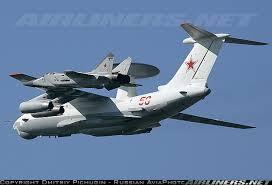
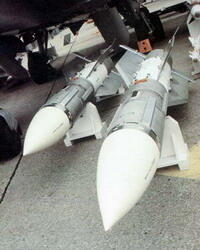
0
4.8K
2
Thread Digembok
Urutan
Terbaru
Terlama
Thread Digembok
Komunitas Pilihan